 W
WHibakusha is a word of Japanese origin generally designating the people affected by the 1945 atomic bombings of Hiroshima and Nagasaki.
 W
WTakeshi Araki was the mayor of Hiroshima from 1975 to 1991.
 W
WFr. Pedro Arrupe, S.J. was a Spanish Basque Jesuit priest who served as the 28th Superior General of the Society of Jesus from 1965 to 1983. He has been called a second founder of the Society as he led the Jesuits in the implementation of the Second Vatican Council, especially with regard to faith that does justice and preferential option for the poor.
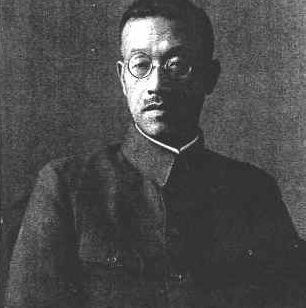 W
WSenkichi Awaya was a Japanese public official who was killed by the atomic bomb dropped on Hiroshima while he was its mayor. He was one of the key figures in the historic clash between the Japanese police and the Imperial Japanese Army in 1933. He is also known for his Christian activity in the Nonchurch movement and close relationship with its early leaders.
 W
WHugo Makibi Enomiya-Lassalle was a German Jesuit priest and one of the foremost teachers to embrace both Roman Catholic Christianity and Zen Buddhism.
 W
WAkiko Futaba was a Japanese popular music (ryūkōka) singer. At of the end of World War II, she was one of the most popular female singers in Japan, competing with Hamako Watanabe and Noriko Awaya. In addition, she took part in the Kōhaku Uta Gassen, one of Japan's most famous annual musical television shows, ten times.
 W
WTamiki Hara was a Japanese author and survivor of the bombing of Hiroshima, known for his works of Atomic bomb literature.
 W
WIsao Harimoto is a Korean former Nippon Professional Baseball player and holder of the record for most hits in the Japanese professional leagues. An ethnic Korean, his birth name is Jang Hun. Harimoto has spent his life as a resident of Japan and adopted a Japanese name, but remains a Korean citizen, thus making him a Zainichi Korean. He was inducted into the Japanese Baseball Hall of Fame in 1990 and now works as a television baseball analyst.
 W
WShunroku Hata was a Field Marshal (Gensui) in the Imperial Japanese Army during World War II. He was the last surviving Japanese military officer with a marshal's rank. Hata was convicted of war crimes and sentenced to life imprisonment in 1948, but was paroled in 1954.
 W
WIkuo Hirayama, was a Japanese Nihonga painter. Born in Setoda-chō, Hiroshima Prefecture, he was famous in Japan for Silk Road paintings of dreamy desert landscapes in Iran, Iraq, and China.
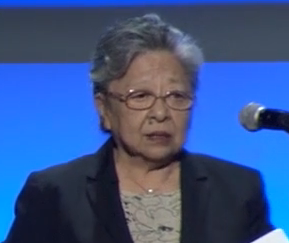 W
WKoko Tanimoto is a prominent atomic bomb survivor, and is the daughter of Kiyoshi Tanimoto, a Methodist minister famous for his work for the Hiroshima Maidens. Both appear in John Hersey's book, Hiroshima.
 W
WIsei Otsuka was a Japanese politician who served as governor of Hiroshima Prefecture from Apr. to June 1945. He was also governor of Tochigi Prefecture (1924–1926), Fukuoka Prefecture (1926–1927) and Ishikawa Prefecture (1927). He was killed in the atomic attack on Hiroshima.
 W
WSadako Kurihara was a Japanese poet who lived in Hiroshima and survived the atomic bombing during World War II. She is best known for her poem Umashimenkana.
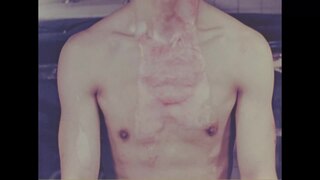 W
WThe Hiroshima Maidens are a group of 25 Japanese women who were school age girls when they were seriously disfigured as a result of the thermal flash of the fission bomb dropped on Hiroshima on the morning of August 6, 1945. They subsequently went on a highly publicized journey to get reconstructive surgery in the US in 1955.
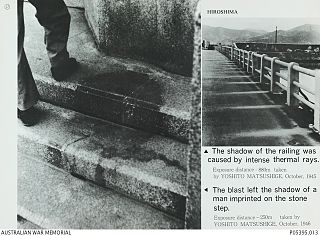 W
WYoshito Matsushige was a Japanese photojournalist who survived the dropping of the atomic bomb on the city of Hiroshima on 6 August 1945 and took five photographs on the day of the bombing in Hiroshima, the only photographs taken that day within Hiroshima that are known.
 W
WAkihiro Maruyama , better known by his stage name Akihiro Miwa , is a Japanese singer, actor, director, composer, author and drag queen.
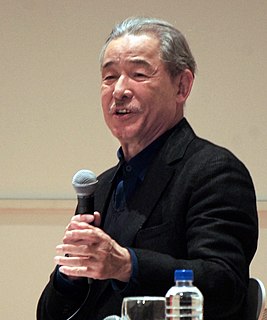 W
WIssey Miyake is a Japanese fashion designer. He is known for his technology-driven clothing designs, exhibitions and fragrances, such as L'eau d'Issey, which has become his most well-known product.
 W
WKensei Mizote is a Japanese politician of the Liberal Democratic Party, a member of the House of Councillors in the Diet.
 W
WTakashi Nagai was a Catholic physician specializing in radiology, an author, and a survivor of the atomic bombing of Nagasaki. His subsequent life of prayer and service earned him the affectionate title "saint of Urakami".
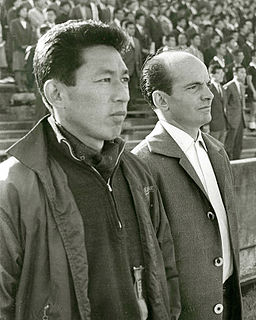 W
WKen Naganuma was a Japanese football player and manager. He played for Japan national team. He also managed Japan national team. He was the president of the Japan Football Association from 1994 to 1998.
 W
WKeiko Sonoi was a Japanese actress, who was a member of the all-female musical-performing Takarazuka Revue during the 1930s and the 1940s, best known for her role as an officer's widow in the wartime film Muhōmatsu no isshō (1943), and for being part of the Sakura-tai or Cherry Blossom Unit of traveling shingeki play actors who died as a result of the 1945 Hiroshima bombing.
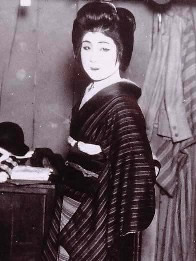 W
WMidori Naka was a Japanese stage actress of the Shingeki style, famous in her country at the time of her death. She survived the atomic bombing of Hiroshima on 6 August 1945, only to die 18 days later. She was the first person in the world whose death was officially certified to be a result of radiation poisoning. Her notability helped publicize the adverse effects of exposure to radiation and encouraged more research on this area.
 W
WYoshio Nishina was a Japanese physicist who was called "the founding father of modern physics research in Japan". He led the efforts of Japan to develop an atomic bomb during World War II.
 W
WŌishi Matashichi (大石又七) was a Japanese anti-nuclear activist and author, and was a fisherman exposed to the radioactive fallout of the Bravo Nuclear Test in the Marshall Islands on March 1, 1954. He was one of twenty-three fisherman on the vessel Daigo Fukuryū Maru. Their catch of tuna and shark was also found to be contaminated with radiation, resulting in two tons of tuna buried at Tsukiji fish market instead of being sold. Members of the crew suffered from acute radiation syndrome, with Kuboyama Aikichi dying of a related infection six months later. Ōishi was hospitalized for several months. He quit the fishing industry and moved to Tokyo to open a laundromat, which he ran for fifty years. His first child was stillborn and he later developed liver cancer.
 W
WKenzo Oshima was a Japanese diplomat.
 W
WSadako Sasaki was a Japanese girl who became a victim of the Atomic bombings of Hiroshima and Nagasaki when she was two years old. Though severely irradiated, she survived for another ten years, becoming one of the most widely known hibakusha – a Japanese term meaning "bomb-affected person". She is remembered through the story of the more than one thousand origami cranes she folded before her death.
 W
WTerufumi Sasaki was a surgeon at the Red Cross hospital in Hiroshima in 1945 and was personally situated 1,650 yards from the hypocenter of the Little Boy explosion. Twenty-five years old that year, out of an initial 30 interviewed, he became one of the six central biopics found in the 1946 book Hiroshima by John Hersey. He lived at his family home in Mukaihara district prior to the detonation and practiced medicine in communities with poor health care without a permit.
 W
WFather Hubert F. Schiffer, S.J. was a German Jesuit who survived the atomic bomb "Little Boy" dropped on Hiroshima.
 W
WOsamu Shimomura was a Japanese organic chemist and marine biologist, and Professor Emeritus at Marine Biological Laboratory (MBL) in Woods Hole, Massachusetts and Boston University School of Medicine. He was awarded the Nobel Prize in Chemistry in 2008 for the discovery and development of green fluorescent protein (GFP) with two American scientists: Martin Chalfie of Columbia University and Roger Tsien of the University of California-San Diego.
 W
WShinoe Shōda was a Japanese poet and author known for her atomic bomb literature.
 W
WGenshin Takano was a Japanese lawyer and Home Ministry and Police Bureau government official. He was born in Fukushima Prefecture. He was a graduate of the University of Tokyo. He was governor of Yamanashi Prefecture (1941–1942) and Hiroshima Prefecture from June 10 to October 11, 1945. Following the atomic attack on Hiroshima, Takano took part in the initial rescue work. On October 11, 1945, his term as governor of Hiroshima expired and he was appointed police officer, but was removed from that position in January 1946 by American occupation authorities due to the policy of purging public officials who served during World War II. Later, he worked as a private lawyer.
 W
WKiyoshi Tanimoto was a Methodist minister famous for his work for the Hiroshima Maidens. He was one of the six Hiroshima survivors whose experiences of the bomb and later life are portrayed in John Hersey's book Hiroshima.
 W
WTomotaka Tasaka was a Japanese film director.
 W
WSetsuko Thurlow , born Setsuko Nakamura , is a Japanese–Canadian nuclear disarmament campaigner and Hibakusha who survived the atomic bombing of Hiroshima on 6 August 1945. She is mostly known throughout the world for being a leading figure of the International Campaign to Abolish Nuclear weapons (ICAN) and to have given the acceptance speech for its reception of the 2017 Nobel peace prize.
 W
WTsutomu Yamaguchi was a Japanese marine engineer and a survivor of both the Hiroshima and Nagasaki atomic bombings during World War II. Although at least 70 people are known to have been affected by both bombings, he is the only person to have been officially recognized by the government of Japan as surviving both explosions.
 W
WColonel Prince Yi U was a Korean Prince as a member of the imperial family of Korea, the 4th head of Unhyeon Palace, and a lieutenant colonel in the Imperial Japanese Army during World War II. He was killed during the atomic bombing of Hiroshima.